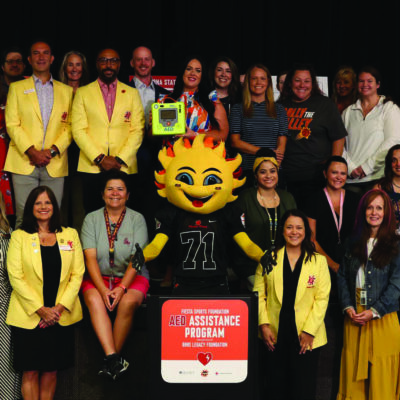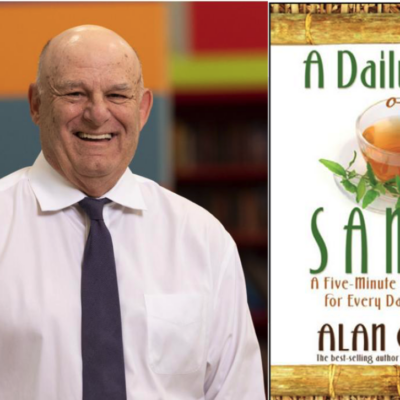A 2nd Act: Queen of Arizona Hearts

Baseball, gum and a sunny hill
By Judy Pearson
The “czar of chewing gum” already owned four palatial homes. But he was building something special on the 100-foot-high la Colina Solana, a sunny hill above his Arizona Biltmore Hotel.
It would be an anniversary gift for his wife, Ada. William Wrigley Jr. had made his fortune selling penny sticks of chewing gum and could well afford the home’s $200,000 price tag (over $3 million in today’s dollars). And oh, what a home it would be.
Built nine miles north of what was then considered Phoenix city limits, the 16,850-square-foot Mission Revival mansion would sit on 10 acres, with a 360-degree view of the Valley of the Sun. The 30-foot-high foyer rotunda was adorned with a gold-leafed and hand-painted ceiling. And the floor below was laid with tiles made in Wrigley’s Catalina Island estate kiln. The rest of the home boasted pegged oak floors covered in beautiful, hand-woven Spanish rugs. The oak Steinway grand piano in the living room was one of only two in existence, doubling as a player piano. And all of the chairs were carefully crafted lower than usual to accommodate Ada’s petite frame.
The chartreuse, black, turquoise and royal blue art deco ceramic tiles used in the 11 bathrooms also came from Catalina Island. They arrived at the building site via boat, then locomotive, and finally mule train. Every doorknob, hinge, window fixture and switch plate in the mansion was brass, except those in the family bedrooms. They were sterling silver.
The mansion took three years to reach its splendor, and William Wrigley planned to spend the early months of 1932 there. But a few weeks after arriving in January, he was stricken with acute indigestion, from which he died at the age of 70 on January 26.
The Wrigley Mansion, as the home came to be called, remained a much-loved family destination until it was sold in 1973. Like a stray dog, it passed from owner to owner: a developer who died of a heart attack, a savings and loan caught up in scandal, another developer who filed for bankruptcy. All the while, its lovely rooms and grounds welcomed business conferences, dozens of brides and grooms, and celebrity parties. And then, the end of the line came: a 1992 rumor reported that this graceful landmark would be demolished for condo construction.
Enter Geordie Hormel, whose family owned Hormel Foods, based in Austin, Minnesota. In the first few minutes of his Wrigley Mansion tour, Geordie was transported back to his childhood home. Having turned it into a supper club, where he entertained guests with his accomplished piano playing, he knew he could do the same with this mansion. The stray dog won Geordie’s heart. He could envision a splendid second act for the mansion and bought it immediately.
Jamie Hormel, Geordie’s widow, and now the mansion’s proprietor said, “I have so many memories of my children growing up here. They’d sneak napkins out of the dining room and slide down the hill on them. Our pastry chefs could always be charmed into giving them treats. We had birthday celebrations and family holidays, and even renewed our wedding vows here.”
The couple began restoring the mansion, and Geordie continued entertaining Sunday brunch guests. “He always played ‘Happy Birthday,’” Jamie explained, “because every day is someone’s birthday.” The mansion now boasts plaques as both a Phoenix “Point of Pride” and a National Register of Historic Places.
Continuing what her husband had begun, Jamie has brought the mansion kitchen into the 21st century, making it a world-class restaurant, while lovingly updating rooms to former grandeur. The spectacular wine cellar is well stocked, outstanding Phoenix chef Christopher Gross is at the helm in the kitchen, and the national awards keep rolling in.
The Wrigley Mansion and the Wrigleys, in general, hold a special place in my heart. My mother was a die-hard — and lifelong — Chicago Cubs fan, the baseball team William Wrigley bought in 1920. Just as she had spent her childhood at Wrigley Field, my brother and I have fond memories of games there, too. I discovered the magical charm of the Wrigley Mansion shortly after the Hormels re-opened it as a private club and restaurant. After having taken my father there when he came to Phoenix on a business trip, he and my mother hatched the idea of a surprise 40th birthday party for me. Every time I walk into the majestic foyer, I’m reminded of that night in 1993.
My mother was never able to visit the czar of chewing gum’s beautiful Phoenix mansion. But I know she would chuckle at one particular detail. Through all of the owners and renovations, one room remained just as William Wrigley created it. To the left of the double front doors is a tiny closet with a small table and a phone. Presumably, the butler used the room to call family members when visitors arrived. It has a unique silver sheen on the walls and the faint odor of mint. It is the “gum room,” and, as is the case in all of the other Wrigley homes, it is wallpapered with foil from my favorite Wrigley chewing gum — Doublemint.






